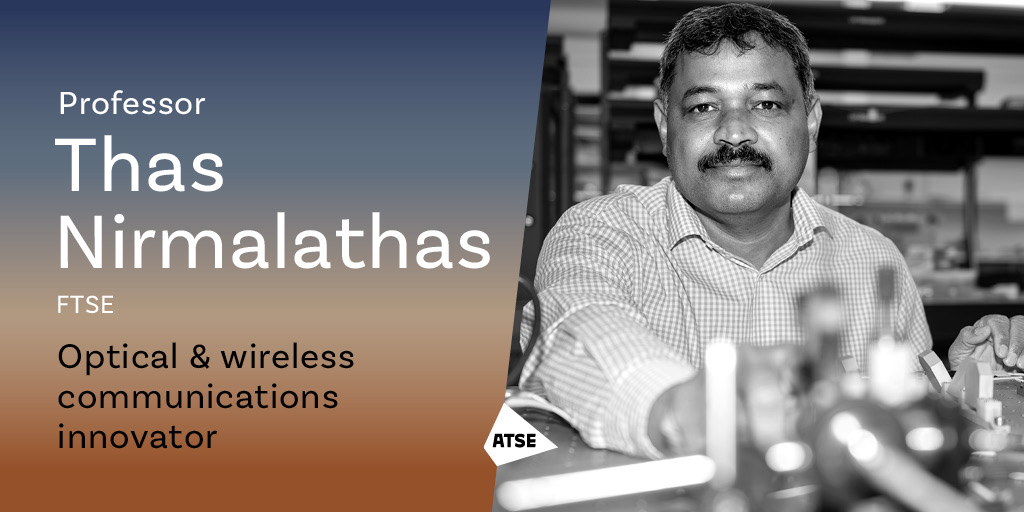
Professor Thas Nirmalathas FTSE
Deputy Dean (Research), Faculty of Engineering and Information Technology, University of Melbourne (VIC)
Professor Thas Nirmalathas is an expert in communications technologies and networking for optical distribution of broadband wireless signals.
He is academic lead at the Wireless Innovation Lab, an industry-university collaboration vehicle aiming to improve accessibility of ultra-fast wireless communications throughout Australia via next-generation wireless solutions.
Thas co-founded the Melbourne Accelerator Program, the first university-aligned Australian startup accelerator. It has assisted more than 200 startups. He also helped establish Translating Research at Melbourne (TRaM). These initiatives gave rise to the Melbourne Entrepreneurship Centre.
Thas’s work foreshadowed advanced broadband mobile networks like 5G and 6G. It also inspired the development of optical wireless transmission using emerging nano-optical fabrication technologies, creating systems compatible with future virtual reality interfaces.
Q&A with Professor Thas Nirmalathas FTSE
Tell us a bit about yourself and your role!
I am an electrical and electronics engineer by background. As engineers, we design and build systems that can help us communicate via the Internet, and help us compute or process signals to achieve better outcomes, such as creating assistive robots.
How would you explain your job to an 8-year-old?
In my job as a professor at the University of Melbourne, I help engineering students to learn about how to design, analyse and build electronic circuits that are behind many things we use in our daily life.
I am also involved in research, exploring interesting new ways to communicate or compute using light signals from lasers, so we can develop even more powerful applications.
I work with companies and organisations to help them solve technical problems when they are making a new product or service.
What are you most excited to see in applied science, technology and engineering over the next 5 years?
We have seen the power of the Internet and how it has transformed many facets of our lives over the past few decades. Both built and natural environments are constantly being monitored to help us digitise every aspect of our interactions with people, things and places.
As new and advanced communication technologies emerge, we are beginning to bring together the data surrounding our increasingly “digital” lives. With automation breakthroughs enabled by artificial intelligence and robotics, we can better understand the critical impact of our activities on the planet and society, and make sound decisions that improve our quality of life and sustainability of the planet.
This convergence of digitisation, networking and automation will demand even greater improvements in communications and computing infrastructure in the future. Personally, I am excited at the possibility of building ultra-broadband wireless communications, using optical (light) signals that can achieve very high-speed computing and signal processing, directly in the optical domain. These advances are crucial to designing and building the next generation of Internet infrastructure and technologies.